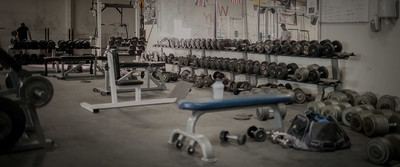The entire reaction that turns ATP into energy is a bit complicated, but here is a good summary:
- Chemically, ATP is an adenine nucleotide bound to three phosphates.
- There is a lot of energy stored in the bond between the second and third phosphate groups that can be used to fuel chemical reactions.
- When a cell needs energy, it breaks this bond to form adenosine diphosphate (ADP) and a free phosphate molecule.
- In some instances, the second phosphate group can also be broken to form adenosine monophosphate (AMP).
- When the cell has excess energy, it stores this energy by forming ATP from ADP and phosphate.
- ATP is required for the biochemical reactions involved in any muscle contraction. As the work of the muscle increases, more and more ATP gets consumed and must be replaced in order for the muscle to keep moving.
Because ATP is so important, the body has several different systems to create ATP. These systems work together in phases. The interesting thing is that different forms of exercise use different systems, so a sprinter is getting ATP in a completely different way from a marathon runner!
ATP comes from three different biochemical systems in the muscle, in this order:
- Phosphagen system
- Glycogen-lactic acid system
- Aerobic respiration
Now, let's look at each one in detail.
Phosphagen System
A muscle cell has some amount of ATP floating around that it can use immediately, but not very much—only enough to last for about three seconds. To replenish the ATP levels quickly, muscle cells contain a high-energy phosphate compound called creatine phosphate.
The phosphate group is removed from creatine phosphate by an enzyme called creatine kinase, and is transferred to ADP to form ATP.
The cell turns ATP into ADP, and the phosphagen rapidly turns the ADP back into ATP. As the muscle continues to work, the creatine phosphate levels begin to decrease. Together, the ATP levels and creatine phosphate levels are called the phosphagen system. The phosphagen system can supply the energy needs of working muscle at a high rate, but only for 8 to 10 seconds.
Glycogen Lactic Acid System
Muscles also have big reserves of a complex carbohydrates called glycogen. Glycogen is a chain of glucose molecules. A cell splits glycogen into glucose. Then the cell uses anaerobic metabolism (anaerobic means "without oxygen") to make ATP and a byproduct called lactic acid from the glucose.
About 12 chemical reactions take place to make ATP under this process, so it supplies ATP at a slower rate than the phosphagen system. The system can still act rapidly and produce enough ATP to last about 90 seconds. This system does not need oxygen, which is handy because it takes the heart and lungs some time to get their act together. It is also handy because the rapidly contracting muscle squeezes off its own blood vessels, depriving itself of oxygen-rich blood.
There is a definite limit to anerobic respiration because of the lactic acid. The acid is what makes your muscles hurt. Lactic acid builds up in the muscle tissue and causes the fatigue and soreness you feel in your exercising muscles.
Aerobic Respiration
By two minutes of exercise, the body responds to supply working muscles with oxygen. When oxygen is present, glucose can be completely broken down into carbon dioxide and water in a process called aerobic respiration.
The glucose can come from three different places:
- Remaining glycogen supplies in the muscles
- Breakdown of the liver's glycogen into glucose, which gets to working muscle through the bloodstream
- Absorption of glucose from food in the intestine, which gets to working muscle through the bloodstream
Aerobic respiration can also use fatty acids from fat reserves in muscle and the body to produce ATP. In extreme cases (like starvation), proteins can also be broken down into amino acids and used to make ATP. Aerobic respiration would use carbohydrates first, then fats and finally proteins, if necessary.
Aerobic respiration takes even more chemical reactions to produce ATP than either of the above systems. Aerobic respiration produces ATP at the slowest rate of the three systems, but it can continue to supply ATP for several hours or longer, so long as the fuel supply lasts.
Overview
So imagine that you start running. Here's what happens:
- The muscle cells burn off the ATP they have floating around in about 3 seconds.
- The phosphagen system kicks in and supplies energy for 8 to 10 seconds. This would be the major energy system used by the muscles of a 100-meter sprinter or weight lifter, where rapid acceleration, short-duration exercise occurs.
- If exercise continues longer, then the glycogen-lactic acid system kicks in. This would be true for short-distance exercises such as a 200- or 400-meter dash or 100-meter swim.
- Finally, if exercise continues, then aerobic respiration takes over. This would occur in endurance events such as an 800-meter dash, marathon run, rowing, cross-country skiing and distance skating.
When you start to look closely at how the human body works, it is truly an amazing machine!
References
- How Stuff Works "ATP Is Energy". 2000* Bodies Of Stone "The Body Machine". 2000

